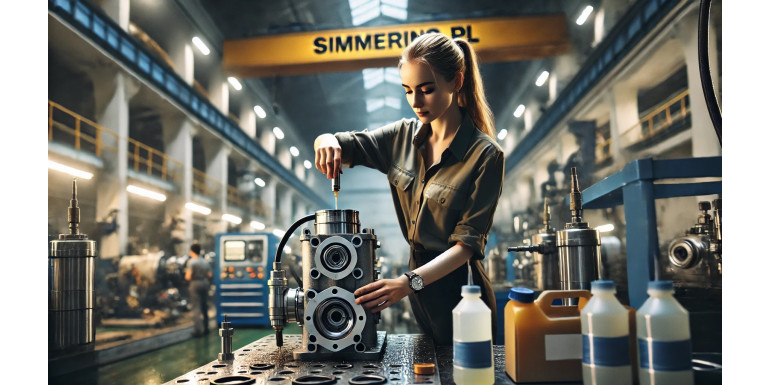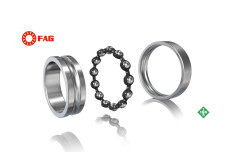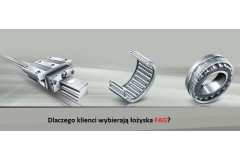
The Role of O-Rings in Hydraulic Systems: Materials, Performance, and Maintenance
Introduction
O-rings are essential components in hydraulic systems, serving as crucial seals to prevent leakage of fluids, maintain system pressure, and ensure optimal performance. Understanding the right material selection and the factors influencing O-ring performance can drastically enhance the lifespan and reliability of hydraulic equipment. This article delves into the role of O-rings in hydraulic systems, focusing on material selection, performance aspects, and maintenance practices.
Understanding O-Rings in Hydraulic Systems
In hydraulic systems, O-rings act as seals between various components, such as pistons, valves, and pumps, to ensure that fluids like oil or hydraulic liquids remain contained. Given the high-pressure environments and the presence of aggressive fluids, the choice of O-ring materials and their proper maintenance play pivotal roles in maintaining system efficiency.
Choosing the Right O-Ring Materials
Different applications require O-rings made from specific materials to ensure durability, flexibility, and chemical compatibility. The most commonly used materials in hydraulic systems include:
-
NBR (Nitrile Butadiene Rubber):
- Advantages: NBR is renowned for its excellent resistance to oils, fuels, and hydraulic fluids, making it a go-to choice for hydraulic applications. It offers good mechanical properties and can operate effectively in temperatures ranging from -30°C to +120°C.
- Use Case: Hydraulic pumps, pistons, and systems involving petroleum-based fluids.
-
Viton® (Fluoroelastomer or FKM):
- Advantages: Viton is known for its outstanding resistance to high temperatures, chemicals, and harsh environments. It performs well in temperatures from -20°C to +200°C, offering long-term durability in hydraulic systems exposed to extreme conditions.
- Use Case: High-pressure hydraulic systems, pumps in aggressive chemical environments, and applications where resistance to fuels, oils, and solvents is essential.
-
EPDM (Ethylene Propylene Diene Monomer):
- Advantages: EPDM provides excellent resistance to water, steam, and other coolants. It also resists aging, ozone, and UV exposure, making it ideal for outdoor hydraulic systems.
- Use Case: Cooling systems, water-based hydraulic systems, and systems exposed to the environment.
-
HNBR (Hydrogenated Nitrile Butadiene Rubber):
- Advantages: HNBR is highly resistant to thermal and oxidative stress, making it perfect for high-temperature hydraulic applications. Its toughness ensures better performance under mechanical stress.
- Use Case: High-temperature and high-pressure hydraulic systems.
Key Factors Influencing O-Ring Performance
-
Temperature Extremes: O-rings in hydraulic systems must operate across a broad range of temperatures. If the O-ring material is not suitable for the system’s operating temperature, it can harden, crack, or soften, leading to leaks.
-
Pressure: Hydraulic systems often function under high pressure, which places stress on the O-ring. The material must have enough flexibility and elasticity to maintain a tight seal under fluctuating pressures. For high-pressure applications, double lip seals or O-rings made from HNBR or Viton are recommended.
-
Chemical Compatibility: Exposure to various hydraulic fluids, oils, fuels, and chemicals necessitates a material resistant to chemical degradation. Compatibility charts can help ensure that the selected O-ring material will not react adversely to the hydraulic fluid in use.
-
Abrasion and Wear: In dynamic hydraulic systems where O-rings are exposed to motion, they need to withstand wear and abrasion. Selecting durable materials like Viton or NBR can enhance performance, especially in high-friction environments.
Maintenance of O-Rings in Hydraulic Systems
To ensure long-lasting performance and prevent downtime, regular inspection and maintenance of O-rings are crucial. Some key practices include:
-
Regular Inspection: Periodically check O-rings for signs of wear, cracking, or flattening. Hydraulic systems can operate under high pressure, which may compress or deform O-rings over time.
-
Lubrication: Proper lubrication of O-rings helps minimize friction and wear, especially in dynamic hydraulic systems. Make sure the lubricant is compatible with both the O-ring material and the hydraulic fluid to avoid degradation.
-
Proper Installation: Improper installation can lead to O-ring failure. It’s essential to avoid twisting or stretching O-rings excessively during installation, as this may weaken the seal. Ensuring the right groove design for the O-ring is also critical to maintain an effective seal.
-
Timely Replacement: Even with the best materials and maintenance practices, O-rings will eventually wear out. Replacing O-rings before they fail ensures that the hydraulic system continues to operate efficiently and avoids costly damage.
Common O-Ring Failures and How to Prevent Them
-
Compression Set: Occurs when O-rings lose their elasticity due to prolonged compression, resulting in a flat cross-section that fails to maintain a proper seal. Prevention involves selecting materials with good compression set resistance, like HNBR, and regular replacement.
-
Extrusion: Extrusion happens when O-rings are pushed out of their groove under high pressure, often leading to failure. Prevent this by using back-up rings or ensuring the correct O-ring size for the application.
-
Chemical Degradation: Certain chemicals can attack O-ring materials, causing swelling or cracking. Always check chemical compatibility before selecting the O-ring material.
Conclusion
The role of O-rings in hydraulic systems cannot be overstated. By choosing the right material, considering the environmental conditions, and maintaining the O-rings properly, you can significantly enhance the performance and longevity of hydraulic systems. Whether it’s NBR for oil resistance, Viton for extreme temperatures, or EPDM for water-based applications, selecting the appropriate O-ring material is key to preventing leaks, ensuring reliability, and minimizing downtime.
At Simmering.pl, we offer a comprehensive range of O-rings designed to meet the highest industry standards. Browse our selection to find the perfect O-ring for your hydraulic systems and enjoy peace of mind with top-quality sealing solutions.
SEO Keywords:
- O-ring material selection
- Hydraulic O-rings
- Industrial O-ring solutions
- High-pressure O-rings
- Chemical-resistant O-rings
- Viton, NBR, EPDM O-rings
- Hydraulic seal maintenance
- Double lip oil seals




Leave a Reply Cancel Reply